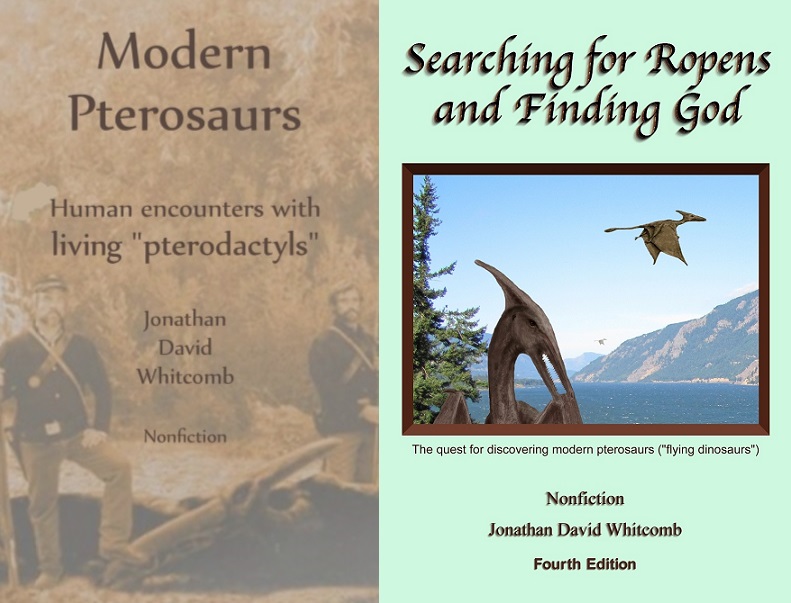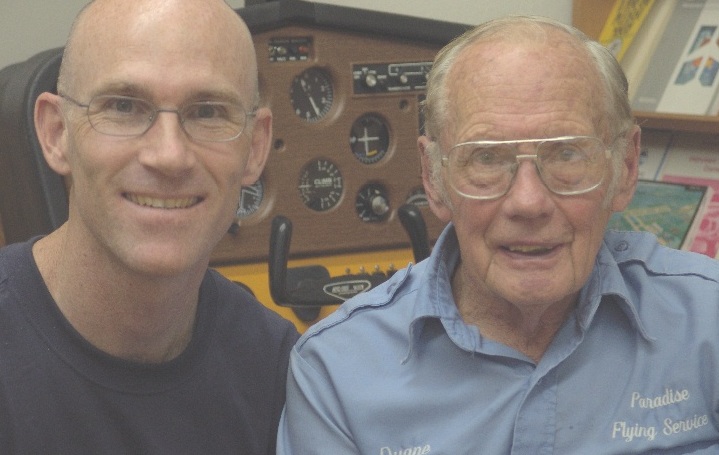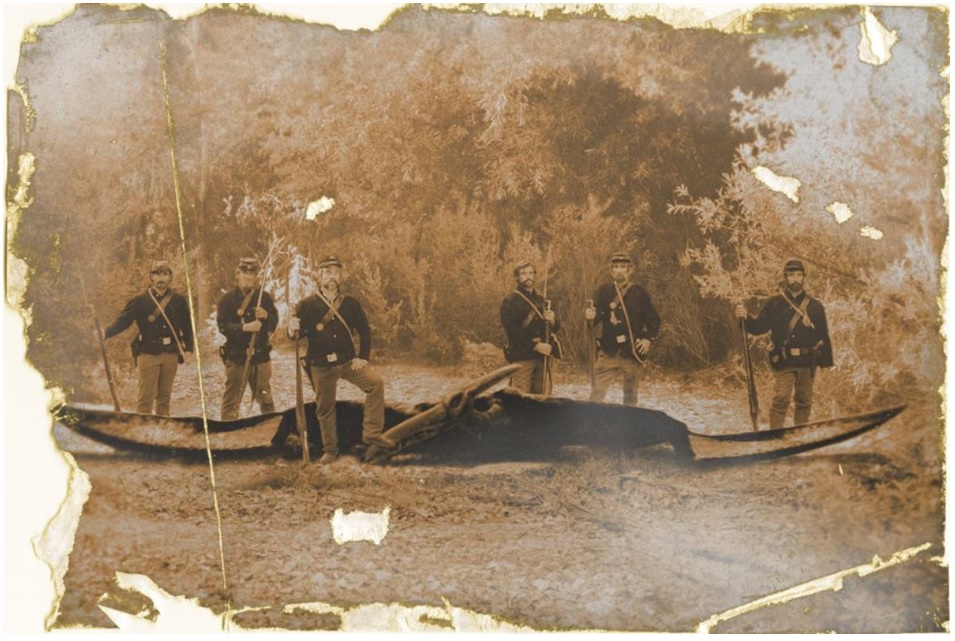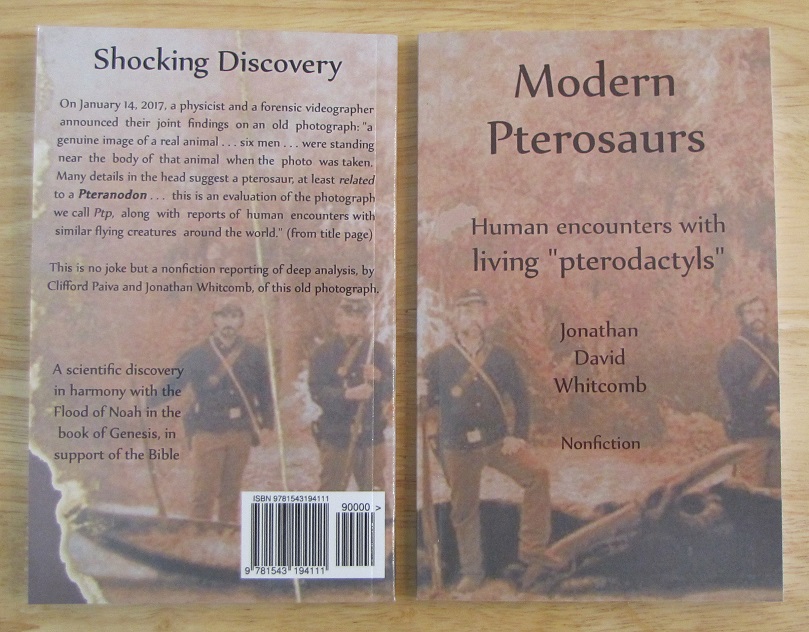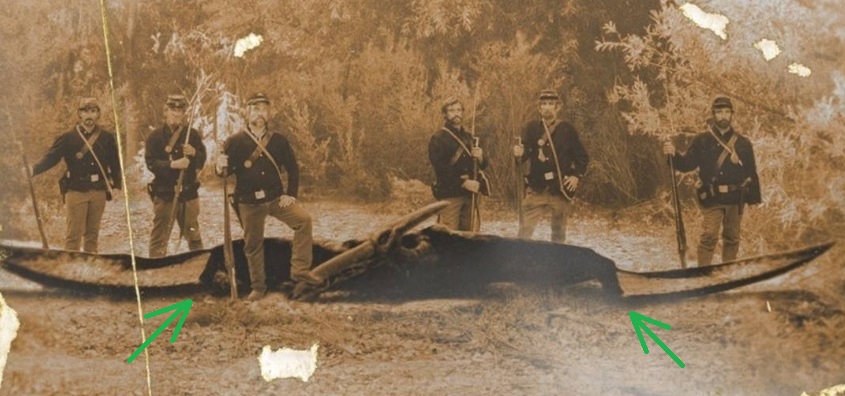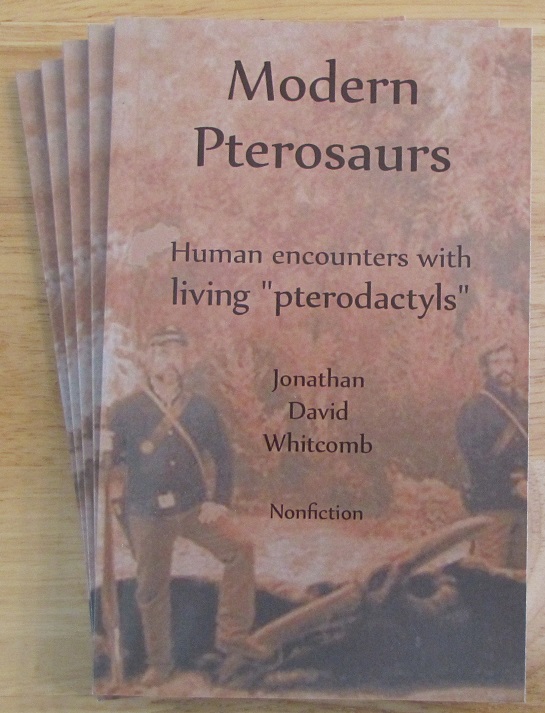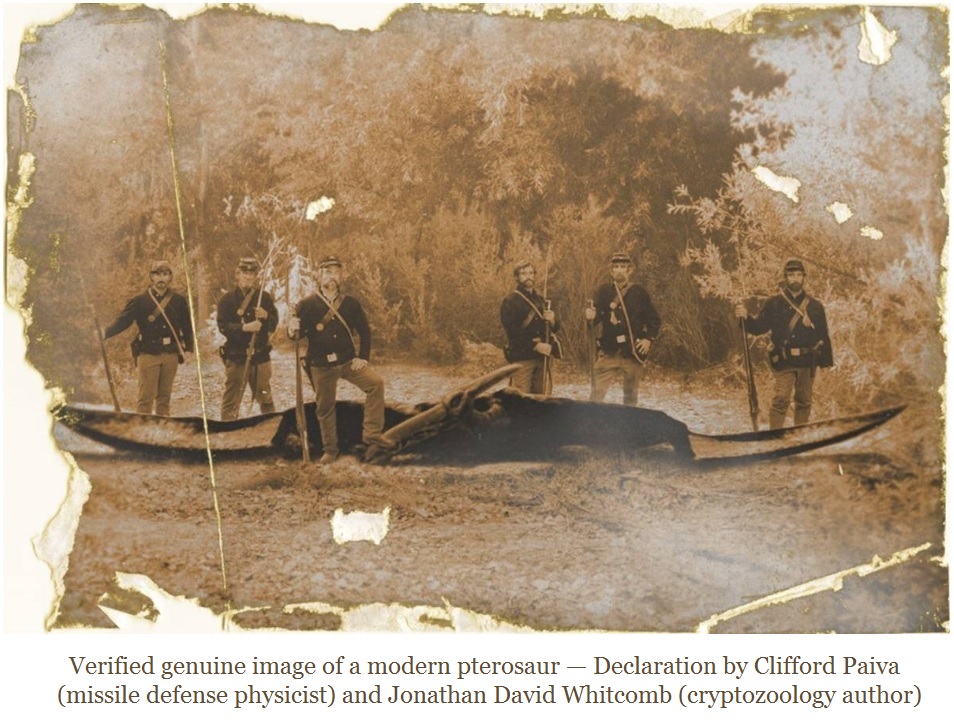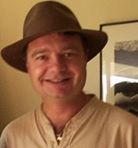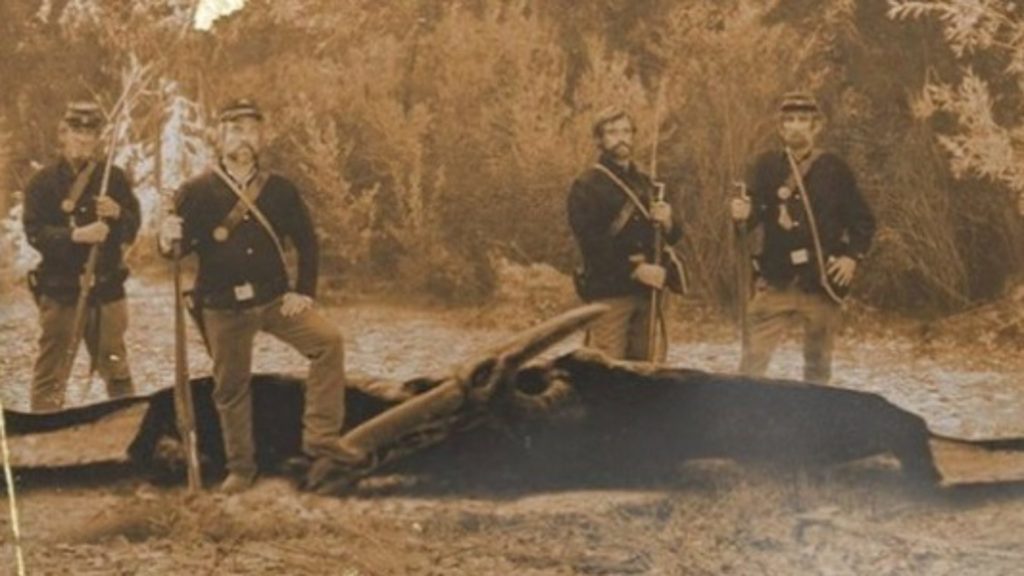By modern-pterosaur researcher Jonathan Whitcomb
For a moment, let’s set aside my recently published book Modern Pterosaurs and see what one skeptic has written about a few pages in my older book Searching for Ropens and Finding God.
A critic of our investigations has written that the army buddy of the late Duane Hodgkinson (DH) was a “biology professor” who denies seeing a pterosaur in that jungle clearing in New Guinea in 1944. How misleading are those statements! To begin, consider the following points:
- I interviewed DH a number of times
- Garth Guessman also interviewed him a number of times
- The critic never interviewed DH
- Nobody, apparently, has ever interviewed the army buddy of DH
Reference to Searching for Ropens and Finding God (fourth edition)
The critic refers to my book, declaring that it says that the army buddy of DH was a biology professor. That is patently false, even though the critic uses that reference with pages “24-28.” Not once is the word professor found in any of those pages of my book. Read pages 24-28, if you have a copy of the fourth edition. Notice that the mistake in not a simple error in the critic’s referencing page numbers: Those pages are about that subject at hand. Any person who will carefully read my nonfiction Searching for Ropens and Finding God should not insert a word from his or her imagination into a published comment, as if that word were in one of those pages in my book. That critic has done just that, falsely called that soldier a professor.
I mentioned that the army buddy of Duane Hodgkinson had some education in biology, and I gave him the benefit of the doubt when I called him a “biologist.” I did not know, when I wrote that word in that page of my book, that a skeptic would some day see biologist on page 28 and take the word professor from his imagination and declare that professor was in that page of my book. I now wish that I had written “biology student” rather than “biologist,” but that editing will have to wait for the next edition. Yet the other blunder made by the critic, which seems technically less glaring a mistake, is far more toxic in leading people away from the truth about what happened in that jungle clearing in 1944: what was observed by those two soldiers.
Was it a Ropen in New Guinea in 1944?
I believe that Garth Guessman and I see this in the same light, having both interviewed the World War II veteran a number of times over a period of years. DH’s army buddy saw the same thing that DH saw, on that day in 1944 in a jungle clearing west of Finschhafen on the island of New Guinea. That biology student just did not want to talk about it.
I have seen this reluctance often, during my investigation over the past 14 years. American eyewitnesses are usually hesitant to admit that they saw a living pterosaur. Some cases are extreme, including this one.
Contrary to what the critic has written in his online publication, I never said or insinuated that DH’s army buddy was distracted and so did not see the animal. Anyone who carefully reads those pages in my book should not make that mistake made by that critic. Let’s look at what is actually printed in Searching for Ropens and Finding God (4th edition) rather than what swims around in the imagination of one skeptic:
What if Hodgkinson had seen something other than what he thought he had, for some unknown reason. A strange bird or bat, however, fails to explain the strange reaction of the other soldier, the man who was educated in biology; it fails to explain why “Well, George, we saw it,” was answered with, “No, we didn’t!”
What I did not include in the book was what DH said right after his buddy again apparently tried to deny what they had seen. DH said something like, “How stupid can you get?” That was said within seconds of so of the sighting.
In other words, if the thing that flew up from that jungle clearing could have been some kind of bird or bat then the biology student would surely have suggested that possibility. Apparently that man decided to pretend that they had seen nothing at all, and the reason is obvious: Why invite people to call you “crazy” or “liar?”
That is not a recent idea I’ve had. Here’s the next paragraph in my book:
Notice that he [the soldier who had some education in biology] did not say it was a bird or a bat; he just denied that they had seen it. A generalized misidentification fails to lift off but a giant long-tailed pterosaur flies perfectly well here, even if it does drop a bomb on standard biology.
In other words, the critic fell into a confirmation bias. He was looking for anything he could find that would discredit the idea that pterosaurs are still living on the earth. When he found out that a man appeared to deny that he had seen a pterosaur, the critic jumped to the conclusion that the man had not seen what the man next to him declared they had seen. The truth, however, is far different from what the critic wants to believe.
.
Garth Guessman (left) and the World War II veteran Duane Hodgkinson (videotaped interview in 2005)
.
Confirmation Bias Against the Possibility of Extant Pterosaurs
I’ve seen other examples of confirmation bias that this critic has fallen into. It comes up repeatedly in his online page. One simple example is in his belief that a word that exists in two different languages in Papua New Guinea (the word ropen) appears to be relevant. He says, “This seems like a very relevant piece of information.” In reality, it is entirely irrelevant, and here is why:
In one language, ropen means a nocturnal flying creature that glows at night (in the Kovai language of Umboi Island); in another language, in another area of Papua New Guinea, ropen means “bird.” In the real world, when one word exists in two languages, the meaning can differ; it often does. Even in the same language, a word can be used very differently for people in different areas. How surprising for an American to hear an English citizen call a column of children walking down a sidewalk a “crocodile!” And that is in the same language: English.
Confirmation Bias and a Photograph of a Modern Pterosaur
For many years, the critic had an image of Ptp on his online page. He declared that it was a hoax from a television show. I communicated with the critic, earlier this year (2017), and revealed to him his mistake: Two photographs are somewhat similar, but the other one came from a TV show, not the photograph he displayed. He then corrected the long-standing error.
The photograph that we now call “Ptp” is not the same photo that was created for the Freakylinks TV show. That hoax photo, however, was modeled after the older photograph, with apparent reenactor Civil War soldiers playing their acting parts to help make the fake image.
But the critic may have then fallen into belief perseverance, or something like it, assuming that Ptp was also a hoax. A person can sometimes fall into both confirmation bias and belief perseverance.
For years, his web page declared that the Ptp photograph was a hoax from a TV show. After learning his mistake, and correcting it on his online publication, however, he held onto his idea that Ptp was a hoax. He searched for every possible thing that could cast doubt on its authenticity. I strongly suspect he had fallen into belief perseverance.
I don’t recall seeing any transition stage of his updating his critical online article. I did not see any version of his page that simply admitted his mistake about confusing the two photos, a version that did not proclaim that Ptp was a hoax. That in itself is suspicious.
Research by Paiva and Whitcomb
My fellow researcher Clifford Paiva suggested that I write a small book about Ptp. The result was Modern Pterosaurs. If you have any questions, feel free to contact me.
We have found much evidence for authenticity for Ptp, over a period of months.
.
The photograph now known as “Ptp” – declared authentic by two scientists
.
Conclusion
Keep an open mind regarding evidences for modern pterosaurs, and beware of shallow half-truths that appear to be evidences against the possibility that not all species of pterosaurs are extinct.
###
Copyright 2017 Jonathan Whitcomb (“Living Pterosaurs and the 1944 Sighting”)
.
In my recently published nonfiction book Modern Pterosaurs, I refer to that long online article that is extremely negative towards living-pterosaur investigations. I labelled that page BAMPP (big anti-modern-pterosaurs page), which is how I refer to it now.
.
Once you know what’s been flying overhead, what people around the world have been encountering, you’ll be better prepared to see and understand the details in Ptp. You should then appreciate what has always been available to those with eyes to see. . . .
.
Scientists examine a photograph of a modern pterosaur
Cliff Paiva found the two evidences shown above [in an image]: shadows that were consistent (yellow arrows) and a vertical eye slit (vertical pupil like in a cat or a reptile)
.
New nonfiction cryptozoology book Modern Pterosaurs by Jonathan Whitcomb
.
From the first chapter in Modern Pterosaurs:
In the summer of 2014, a well-known biology professor at a Midwestern university wrote a scathing blog post about my online writings concerning apparent modern pterosaurs. It included ridiculing the lack of photos of the creatures on my web pages. Whatever pages he had seen, it appears he failed to notice the ones that examined the photo now called Ptp.
.



